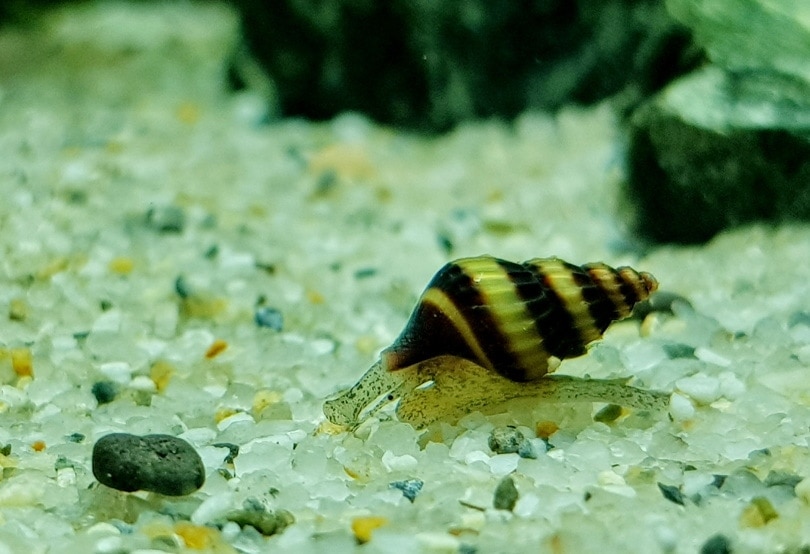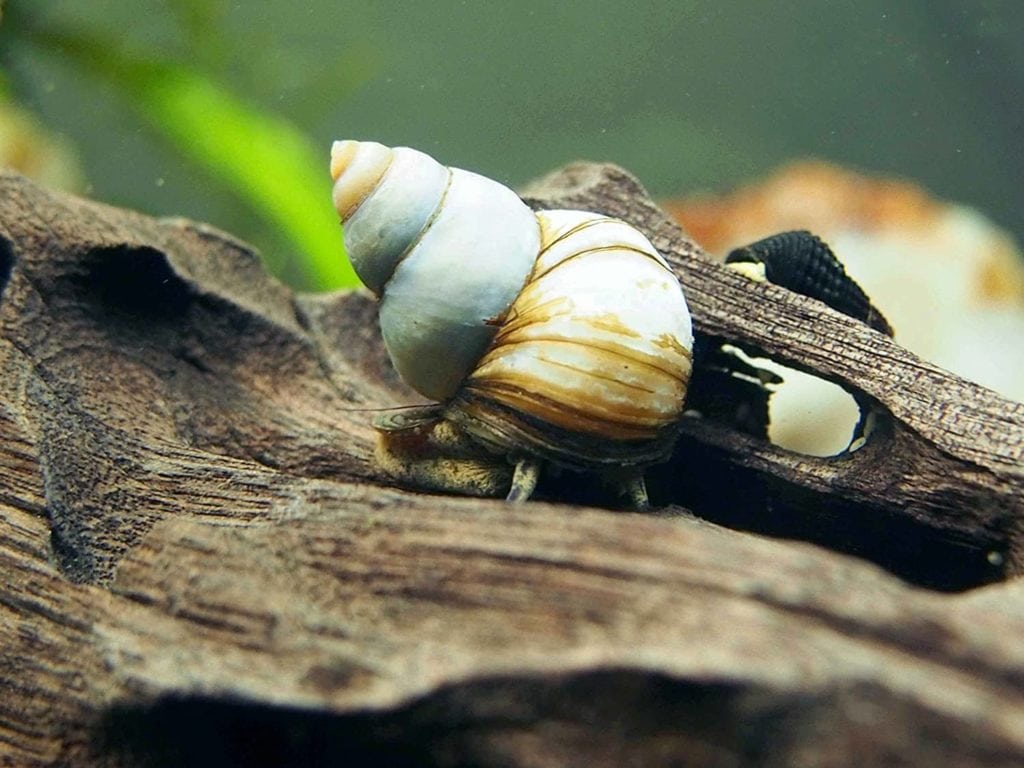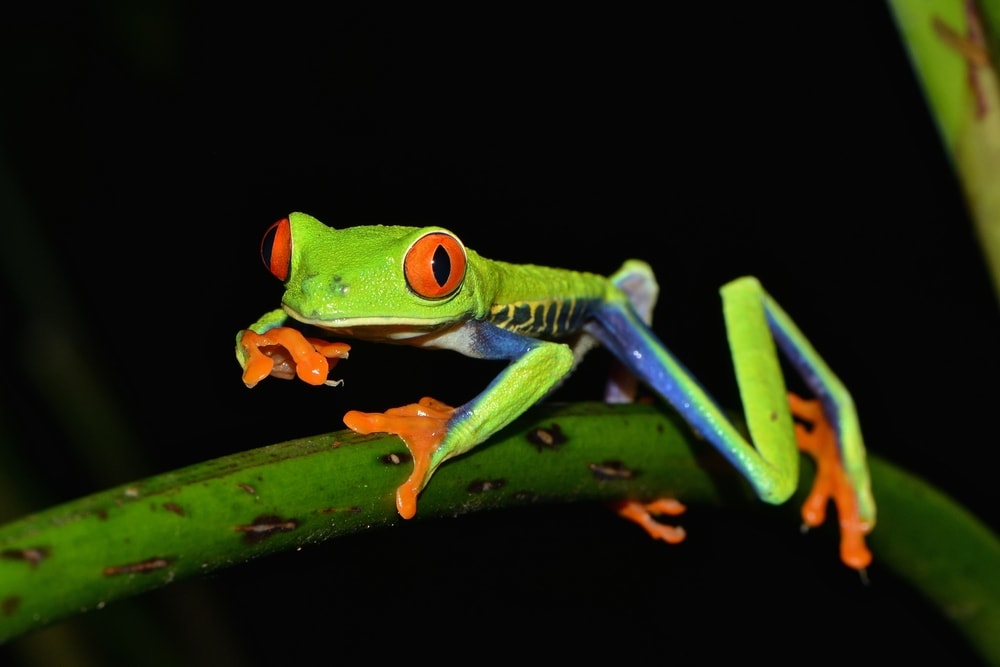10 Types of Freshwater Aquarium Snails (With Pictures)
Updated on

Snails are a common sight in many types of aquariums, and for good reason. Different snail species can provide a variety of services within an aquarium, from picking up leftover fish food and eating dead plant matter to turning substrate.
From the comical Mystery snail to the prolific Malaysian Trumpet snail, there’s a perfect snail for just about every freshwater aquarium setup. It’s important to select your snail residents with care, though, because not all snails are suitable for all aquariums.
The 10 Types of Freshwater Aquarium Snails
1. Mystery Snail

| Size: | 12–2.5 inches (5–6.4 cm) |
| Diet: | Omnivorous |
The Mystery snail is one of the most popular freshwater aquarium snails, and if you’ve ever kept them, you know exactly why. These snails are extremely fun to watch! They’re also sometimes misidentified as apple snails. They have a solid sense of smell, and they are known to quickly head toward food as soon as it’s dropped into the water. Don’t be fooled by their “snail” title, either—these snails can move pretty quickly.
One of their funniest habits is going high up in the aquarium and then letting go of whatever they’re on, “parachuting” back to the bottom of the tank. They are large snails, reaching up to 2 inches, and they are a great option for cleaning up leftover fish food and dead plants.
Mystery snails require a male and female to reproduce, but females can hold sperm for upwards of 9 months.
2. Nerite Snail

| Size: | 0.5–1 inch (1.2–2.5 cm) |
| Diet: | Omnivorous |
The Nerite snail is another highly popular freshwater snail, and it’s widely available in pet stores. A downside of these snails is that the females will lay their eggs all over everything in your tank.
Nerite owners often refer to it as “bedazzling” the tank. The good news is that these eggs won’t hatch in freshwater. Nerite eggs require brackish water to hatch, so you don’t have to worry about being overrun.
These scavengers are an excellent cleanup crew, and they’re available in multiple interesting patterns and shapes, including the Horned Nerite and Zebra Nerite. Some Nerites stay quite small, and they have a lower bioload than the much larger Mystery snail.
3. Rabbit Snail

| Size: | 1.5–3 inches (3.8–7.6 cm) |
| Diet: | Herbivorous |
The Rabbit snail is a large freshwater snail that can reach up to 3 inches in length. These snails have an affinity for various types of aquarium algae and other plant matter, but they will scavenge for other food in the tank as well. They have extremely cute faces that resemble a rabbit, giving them their name.
They are active snails that can be spotted exploring the tank throughout the day and night. Many people feel like they have big personalities when it comes to snails, but they are peaceful tank inhabitants.
Rabbit snails are slow to reach sexual maturity, and they reproduce minimally, so it’s extremely uncommon to end up with a tank overrun with Rabbit snails.
4. Japanese Trapdoor Snail
| Size: | 1–2 inches (2.5–5 cm) |
| Diet: | Algivorous (algae eaters) |
The Japanese Trapdoor snail is named for its hard operculum, which is the hard plate that allows the snail to fully close itself into its shell. They are relatively large snails, reaching up to 2 inches in length. They are primarily algivorous, or algae eaters, but they will also eat detritus, leftover fish food, and most other things they come across in the tank. They rarely eat live plants, but they are known to eat live plants if there is not enough other food available.
They can reproduce in freshwater tanks, but like the Rabbit snail, they reproduce infrequently. They give live birth, so you won’t see any eggs with these snails around.
5. Assassin Snail

| Size: | 0.75–3 inches (1.9–7.6 cm) |
| Diet: | Carnivorous |
The Assassin snail is often small in pet stores, but they can reach up to 3 inches in length with proper care. These snails are often purchased by people looking to take care of a “pest” snail population.
Assassin snails are named for their tendency to kill and eat other snails. While this can be beneficial to clear up an infestation of other snails, they also will begin to eat other things in the tank once the food supply of other snails runs out. They will eat all types of snails, as well as other invertebrates in a pinch, including shrimps and crawfish.
They require a male and female to reproduce, but they can reproduce in freshwater. The females lay eggs that hatch after about 30 days.
6. White Wizard Snail

| Size: | 1–2 inches (2.5–5 cm) |
| Diet: | Omnivore, but prefers detritus (decomposing matter) |
The White Wizard snail is not a common snail because they’re relatively new to the aquarium trade and are still considered rare, so they are not easy to find in pet stores and aquatic shops. These snails can reach up to 2 inches in length, and their primary diet consists of leftover food. They do eat algae but they aren’t efficient algae eaters.
They are peaceful tank inhabitants that may not be as active as other types of snails, but they are easy to spot due to their size and beautiful white coloration. They will breed in freshwater, but they reproduce slowly, so there is little risk of them taking over.
7. Ramshorn Snail

| Size: | 0.25–1 inch (0.7–2.5 cm) |
| Diet: | Omnivorous |
The Ramshorn snail is sometimes considered to be a pest snail because of its prolific reproduction. They are beautiful snails that come in a variety of colors, though, and they have unique and interesting shell shapes. They are omnivorous snails that love to consume detritus, plant matter, and leftover food in the tank. Unfortunately, they seem to have an affinity for tender plants, so they’re typically not suitable for tanks with delicate plants.
They are hermaphroditic snails that don’t require a partner to reproduce. They are egg layers, and they will leave their spiral-shaped, mucoid egg clutches on just about any surface in the tank, including the glass.
8. Malaysian Trumpet Snail

| Size: | 0.25–1 inch (0.7–2.5 cm) |
| Diet: | Omnivorous |
The Malaysian Trumpet snail (MTS) is a common snail considered to be a pest species in some countries. These snails stay relatively small, only reaching up to 1 inch in length, and they have a bad reputation due to the ability to reproduce without a mate. MTS give live birth quite prolifically, so it doesn’t take long for one snail to turn into dozens or hundreds. The key to keeping these snails is to not overfeed the tank. The more food they have access to, the more MTS will reproduce.
What is often overlooked about these snails is the significant benefit that they can provide in a tank with a soft substrate. Sometimes, dangerous anaerobic bacteria will build up under the substrate in a tank, and these bacteria produce gases that when released, can harm or kill tank inhabitants. This snail’s habit of burrowing through the substrate keeps it tilled and prevents the buildup of dangerous anaerobic bacteria.
9. Pond Snail

| Size: | 1–3 inches (2.5–7.6 cm) |
| Diet: | Omnivorous |
The Pond snail is one of the larger snails in the aquarium trade, with some reaching 3 inches or more, but most in captivity don’t exceed 1–2 inches. These snails are extremely easy to care for, and they are prolific breeders. They are egg-laying snails that will leave mucoid egg clutches all over the tank.
They can live up to 3 years with proper care, so they are not a short-lived snail species. Although native to Europe, they have become naturalized in most of the world, and they are considered to be invasive in many areas.
They have shells with two to six whorls, and they are brownish. These hardy snails are often considered to be “bombproof,” often surviving events that kill everything else in the tank.
10. Bladder Snail

| Size: | Up to 0.6 inches (1.5 cm) |
| Diet: | Omnivorous |
The Bladder snail is often confused with the Pond snail, but there are some notable differences between these two “pest” snail species. The Bladder snail stays significantly smaller than the Pond snail, rarely exceeding 0.6 inches in length. They have slightly more rounded and less pointed shells than Pond snails as well. Bladder snails rarely eat live plants, while Pond snails are known to eat healthy plants on occasion.
While Pond snails are prolific, Bladder snails are considered to be extremely prolific, and are often referred to as being “born pregnant.” Bladder snails typically have shells that spiral to the left, while Pond snail shells usually spiral to the right.
Feeding Your Snails
The top mistake that people make with snails is not feeding them. Snails are often purchased for a specific purpose, like removing tank algae or getting rid of other snails. However, snails should always be provided with a food source. You don’t have to feed your snails daily if there is a notable food source in the tank, but they do need to be fed multiple times per week.
The dietary needs vary between snails, but many snail species can consume fish foods and algae wafers. All snails should be provided with a source of calcium to maintain shell health. This can be provided in multiple ways, including through their food and the addition of cuttlebone to the aquarium.
Final Thoughts
Snails can be a great addition to your aquarium but educating yourself on the species of snail you’re interested in before you bring it home will help you be prepared for what to expect. If you decide on snails that reproduce prolifically, you will likely need a backup plan for culling excess offspring. Even in the most well-managed tanks, some snails can eventually take over.
See Also:
- How to Tell if an Aquarium Snail is Dead (or Just Sleeping)
- How to Make a DIY Sponge Filter for Your Aquarium (With Pictures)
Featured Image Credit: Sabine Schmidt, Shutterstock












